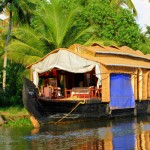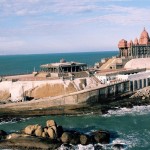History of Thrissur
The word ‘Trichur’ is the anglicized form of the Malayalam name of the town ‘Thri-Siva-Perur’, meaning the town of Lord Siva. The name is appropriate, for Trichur derives its main glory from Vadakunnathan Temple, (Vadakunnathan, Lord of the North, is a name of Siva) that dominates the topography of the town.Trichur is of hoary fame, and the origin of Vadakkunnathan Temple is ascribed to Parasurama, the legendary hero who is said to have reclaimed Kerala from the sea by a miraculous feat. In historical times it was a suburb of Musiris (present Cranganore) the capital of the ancient Chera Empire, an international Emporium where most of the ancient trading nationals of the world had their settlements. From very early times Trichur has been a centre of learning and, with the decline of Buddism and Jainism and the establishment of the supremacy of Brahminism during the revival of Hinduisum, Trichur became an important centre of Sanskrit learning. The great Sankara Acharya had taught Advaita here. After his travels in different regions of India he is believed to have come back and settled in Trichur and died here.Sankara Acharya’s disciples Hastamalaka, Thotaka. Padmapada and Sudhachara established in the town four Maddams, namely the Northern Madham, the Middle Madham, the ln-Between Madham and the Southern Madham respectively, all of which are extant except the In-Between one.
From the 9th to the 12th century Kulasekharas of Mahodayapuram took over the rule and from the 12th century onwards the history was of Perumpadappu Swarupam. The Perumpadappu Swarupam had its headquarters at Mahodayapuram. Central Kerala was the control of the Perumpadappu Moopil, known as the ‘Kerala Chakravarthi’. In the 14th and 15th centuries the Zamorins of Calicut managed to occupy a large part of the present Thrissur district. Kodungalloor, the old harbour of India,attracted European powers to Kerala for trading spices and other commodities. In the consequent centuries the European powers dominated the scene. In the start of 15th century, the Portuguese came and by the beginning of the 17th century the Dutch and the English appeared on the panorama and challenged the Portuguese. Internal conflict in the Perumpadappu Swarupam helped the Dutch to establish their domination in Kerala coast. Hyder Ali and Tippu Sultan figured very prominent in the northern part of Kerala during that period. The history of modern Thrissur started with the swearing ceremony of Raja Rama Varma in 1790, who is popularly known as Sakthan Thampuran (1790-1805). The mighty ruler Sakthan Thampuran is legendary as the architect of Thrissur town.











Add Thrissur History Feedback, Comments, Reviews